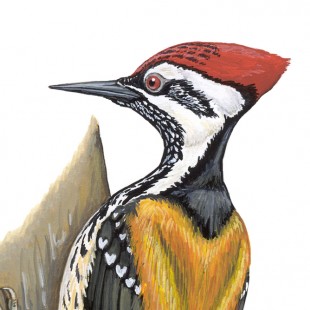
Dinopium benghalense
SUBFAMILY
Picinae
TAXONOMY
Dinopium benghalense Linnaeus, 1758.
OTHER COMMON NAMES
English: Black-rumped flameback, black-rumped goldenbacked
woodpecker, lesser golden-backed woodpecker; French:
Pic du Bengale; German: Orangespecht; Spanish: Pico Lomo
en Llamas.
PHYSICAL CHARACTERISTICS
10.2–11.4 in (26–29 cm), 3.0–4.7 oz (86–133 g); a medium redcrested
woodpecker; black mantle, lower back, and rump; yellow
to yellow-green mid-back and wings; black tail; breast
white with feathers edged in black. Male’s forehead is red to
bill; female’s forehead is black with white spots. Race from Sri
Lanka has back and wings deep red, more black on head.
DISTRIBUTION
Indian subcontinent.
HABITAT
Diverse forest and cultivated areas.
BEHAVIOR
Seen in pairs and in mixed species flocks. Pair members keep
in contact with one another using frequent loud rattling calls.
Breaks into leaf nests of ants. Frequents coconut plantations
and wooded gardens.
FEEDING ECOLOGY AND DIET
Primary food is ants, but takes other arthropods, fruit, and nectar.
REPRODUCTIVE BIOLOGY
Nests in March to April in most areas, again in July and August
in south; from December to September in Sri Lanka.
Clutch of 2–3 white eggs is incubated by both parents for
17–19 days; both adults feed young by regurgitation; young
fledge at 21–23 days; sometimes a second brood is raised.
CONSERVATION STATUS
Not threatened.
SIGNIFICANCE TO HUMANS
None known.
Photo Gallery of - Lesser flame-backed woodpecker
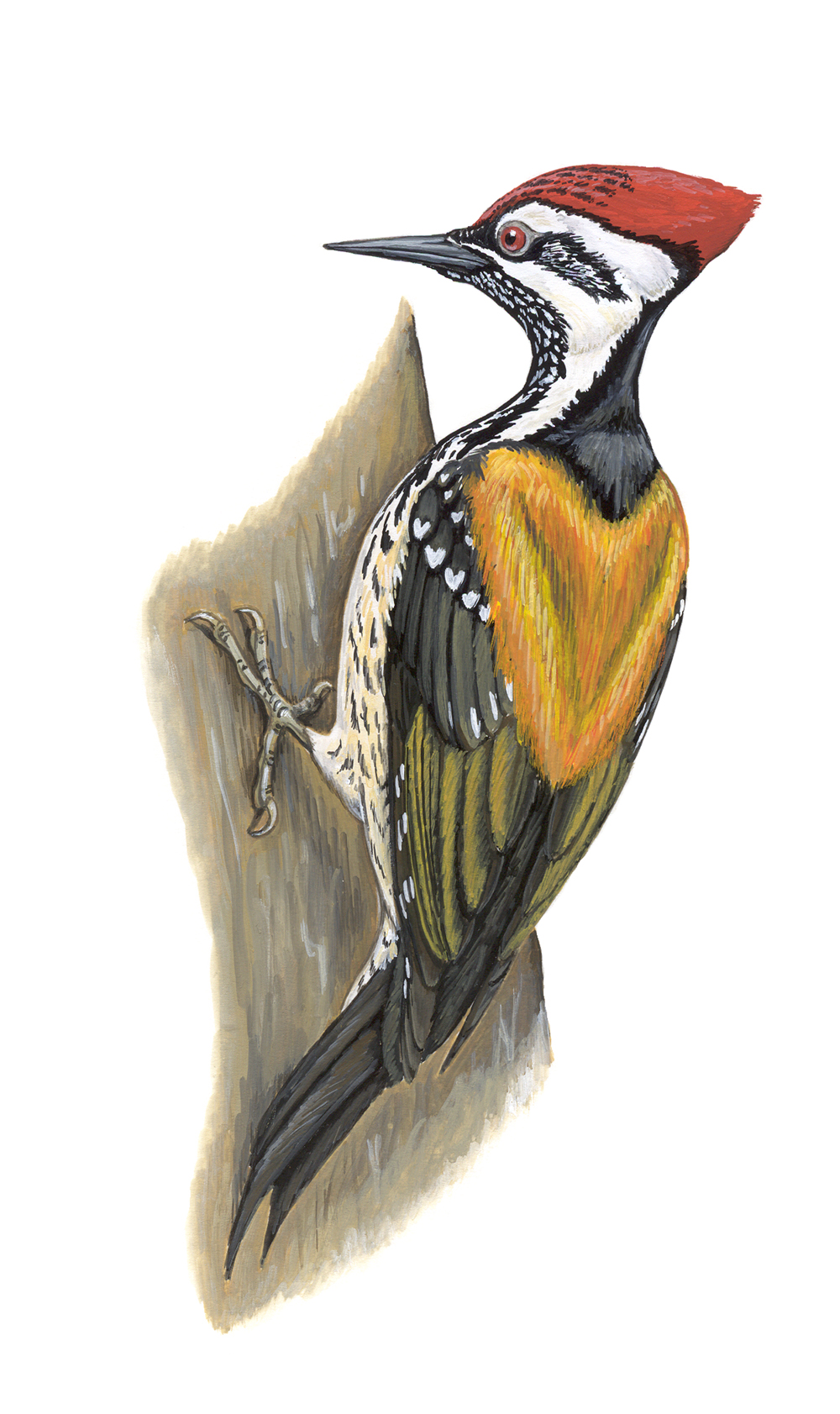
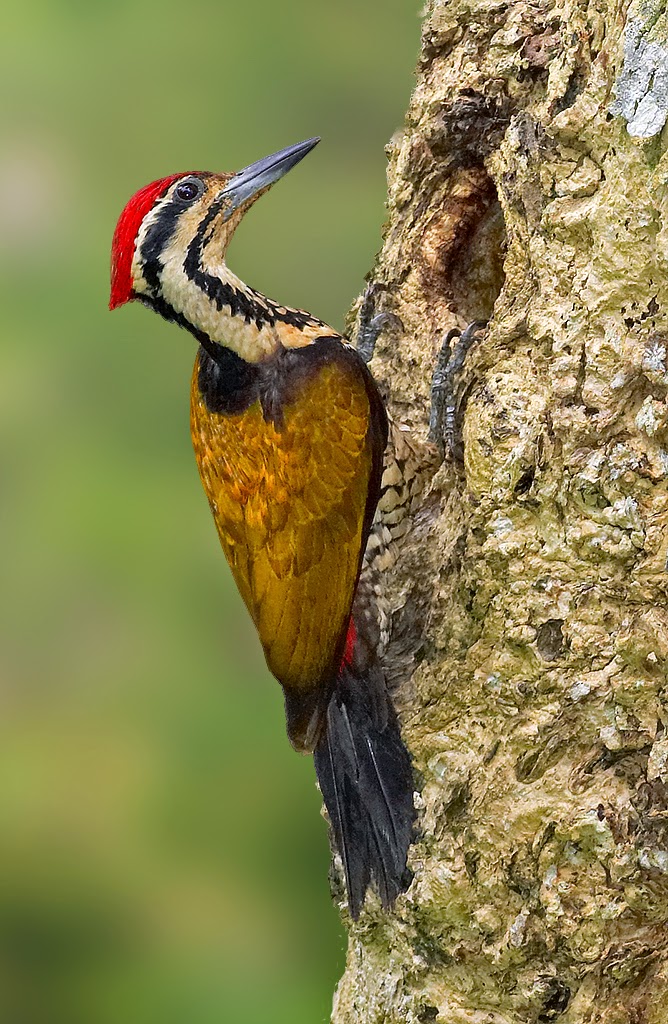
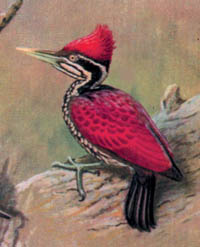
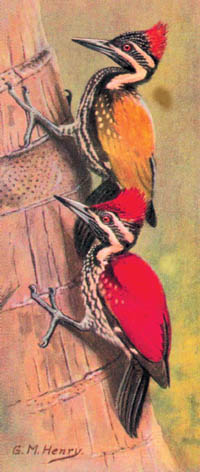
 Animalia Life
Animalia Life